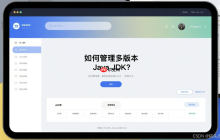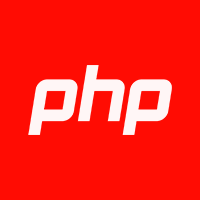-

- MySQL安装包如何下载_MySQL安装包下载步骤详细解析
- 答案:下载MySQL安装包应访问dev.mysql.com,选择社区版中的MySQLCommunityServer,根据操作系统选择对应版本和安装包类型。1.访问dev.mysql.com/downloads,进入社区版下载页面;2.选择MySQLCommunityServer;3.根据操作系统(Windows、macOS、Linux)选择平台;4.选择合适版本(新项目选8.0,兼容性优先选5.7);5.下载对应安装包(Windows可选.msi或.zip,macOS为.dmg,Linux有.d
- 后端开发 . spring-boot 886 2025-09-05 17:07:01
-

- Spring Boot 有哪几种读取配置的方式?
- SpringBoot通过application.properties/yml、@Value、@ConfigurationProperties、环境变量、命令行参数等多种方式读取配置,并按优先级生效,其中命令行参数优先级最高,支持多环境Profile管理,推荐使用@ConfigurationProperties处理结构化配置以提升可维护性。
- 后端开发 . spring-boot 970 2025-09-05 13:28:01
-

- SnakeYAML处理YAML列表对象:Java类映射深度解析
- 针对使用SnakeYAML将YAML文件中的复杂列表结构映射到JavaList对象时遇到的常见问题,本文详细阐述了正确的Java类定义与YAML结构对应关系。通过具体示例,指导开发者如何为列表中的每个复杂元素创建独立的Java类,并确保YAML缩进与Java对象层次的准确匹配,从而实现高效、无错的数据转换。
- 后端开发 . spring-boot 382 2025-09-05 12:53:08
-

- 多项目开发环境:如何使用update-alternatives管理多版本Java JDK?(Windows、Mac、Ubuntu)
- 如何使用update-alternatives管理多版本JavaJDK?(Windows、Mac、Ubuntu)?摘要在实际开发中,往往会遇到既要维护老项目又要跟进新特性的场景,这就需要在一台机器上同时安装并切换多个JavaJDK版本。本文将针对三大主流平台——Windows、macOS和Ubuntu,详细介绍如何安装多个JDK,并使用各自平台上的“替代方案”工具来管理与切换。Windows:通过系统环境变量与批处理脚本实现版本切换macOS:利用/usr/libexec/java_home
- 后端开发 . spring-boot 319 2025-09-05 08:39:33
-

- ️「云原生Java」Kubernetes中Java应用资源占用降低60%的配置技巧
- 通过JVM参数调优、容器化适配与Kubernetes资源协同,可大幅降低Java应用内存占用。关键在于启用UseContainerSupport、合理设置MaxRAMPercentage、G1GC等GC策略,并配置Metaspace与CodeCache上限;结合Kubernetes的requests/limits精准分配资源,预留20%-50%堆外内存,实现资源利用率最大化。
- 后端开发 . spring-boot 603 2025-09-04 23:36:02
-

- Waterfox浏览器405故障修复-浏览器405错误处理详细指南
- 405错误表示资源存在但请求方法不被允许,区别于404的资源不存在;可通过清理缓存、禁用扩展、检查开发者工具及服务器配置排查,重点确认HTTP方法与服务器允许的方法一致。
- 后端开发 . spring-boot 631 2025-09-04 22:17:01
-

- UCBrowser浏览器405修复-浏览器405错误解决完整指南
- 405错误表示服务器不接受请求方法,用户可先清理UCBrowser缓存、检查URL、尝试无痕模式或更新浏览器;若无效,则需网站管理员检查服务器配置或后端路由设置是否允许对应HTTP方法。
- 后端开发 . spring-boot 977 2025-09-04 21:10:02
-

- 使用构造器注入替代 @Autowired 注解:Spring Boot 最佳实践
- 本文旨在帮助开发者理解如何在SpringBoot项目中,通过构造器注入的方式替代@Autowired注解,从而提升代码的可测试性和依赖管理的清晰度。我们将详细介绍如何使用Lombok的@AllArgsConstructor注解简化构造器注入,并探讨在Spring容器中正确注册Bean的必要步骤,避免常见的配置错误。
- 后端开发 . spring-boot 705 2025-09-04 20:39:01
-

- ️「SpringBoot3.2深度探索」WebFlux性能优化与RSocket集成指南
- SpringBoot3.2通过升级底层依赖、增强GraalVMNativeImage支持、深化MicrometerTracing集成及引入ProjectLoom虚拟线程,优化WebFlux性能;同时通过spring-boot-starter-rsocket简化RSocket集成,实现高效服务间通信;结合WebFlux与RSocket时需规避阻塞操作、合理管理背压、选用高效序列化协议,并借助观测工具监控数据流,以充分发挥响应式架构的性能优势。
- 后端开发 . spring-boot 932 2025-09-04 20:10:01
-

- Docker+Java最佳实践:镜像大小减少70%的构建优化方法
- 多阶段构建是Java应用Docker镜像瘦身的核心,通过分离编译与运行环境,仅将编译后的JAR包复制至最小化JRE基础镜像,避免包含JDK、构建工具等冗余文件,结合slim镜像和.dockerignore优化,可显著减少镜像体积。
- 后端开发 . spring-boot 478 2025-09-04 18:51:01
-

- Java智能对话机器人开发:集成OpenAI GPT-4与语音合成
- 答案是开发Java智能对话机器人需整合SpringBoot、OpenAIGPT-4API和TTS服务;通过WebClient实现异步通信,用Redis管理会话上下文,结合滑动窗口或摘要策略控制token,集成GoogleCloudText-to-Speech等SDK实现语音合成,确保安全、稳定与低延迟。
- 后端开发 . spring-boot 803 2025-09-04 18:42:01
-

- 谈谈你对Java平台的理解,什么是“一次编写,到处运行”?
- Java虚拟机(JVM)是实现“一次编写,到处运行”的核心,它通过将Java字节码翻译为特定平台的机器码,屏蔽了底层差异,实现跨平台兼容;同时JVM提供内存管理、垃圾回收和JIT编译等机制,保障程序的高效与稳定运行。尽管存在JNI依赖、UI差异、性能波动和环境配置等挑战,Java仍凭借其强大生态在企业级应用、Android开发、大数据(如Hadoop、Spark)、云计算和微服务(如SpringBoot)等领域持续展现强大适应性与生命力。
- 后端开发 . spring-boot 587 2025-09-04 16:17:01
-

- Spring响应式事务管理:R2DBC与MySQL实战
- 答案是:Spring响应式事务管理结合R2DBC与MySQL,通过非阻塞I/O和响应式流实现高并发下的ACID特性,需引入spring-boot-starter-data-r2dbc等依赖并配置R2DBC连接池,使用@Transactional注解管理事务,其核心区别在于基于ReactorContext传播事务上下文而非ThreadLocal,避免阻塞操作、确保上下文正确传递、防止错误被吞噬导致回滚失败,并通过合理配置连接池、缩小事务范围、批量操作及SQL优化提升性能。
- 后端开发 . spring-boot 695 2025-09-04 15:34:17
-

- Jenkins流水线Java项目CI/CD实战:从构建到自动部署
- Jenkins流水线通过自动化构建、测试和部署,解决了传统Java项目部署效率低、错误率高、缺乏一致性及回滚困难等问题。采用Jenkinsfile定义CI/CD流程,结合Maven构建、Docker打包与SSH部署,实现标准化、可重复的交付。利用Docker镜像确保环境一致性,通过依赖缓存(如Maven/Gradle本地仓库、Docker层缓存)和构建优化(分阶段、并行构建)提升效率。同时,需规避环境不一致、凭证硬编码、脚本非幂等、回滚缺失和监控不足等陷阱,采用配置外化、Jenkins凭据管理、
- 后端开发 . spring-boot 483 2025-09-04 15:19:04
-

- 如何部署一个机器学习模型到生产环境?
- 部署机器学习模型需先序列化存储模型,再通过API服务暴露预测接口,接着容器化应用并部署至云平台或服务器,同时建立监控、日志和CI/CD体系,确保模型可扩展、可观测且可持续更新。
- 后端开发 . spring-boot 255 2025-09-04 09:30:41

PHP讨论组
组员:3305人话题:1500
PHP一种被广泛应用的开放源代码的多用途脚本语言,和其他技术相比,php本身开源免费; 可以将程序嵌入于HTML中去执行, 执行效率比完全生成htmL标记的CGI要高许多,它运行在服务器端,消耗的系统资源相当少,具有跨平台强、效率高的特性,而且php支持几乎所有流行的数据库以及操作系统,最重要的是





























